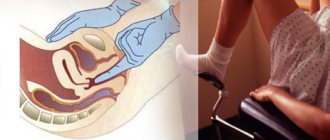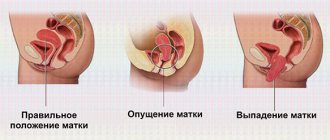Many who gave birth in maternity hospitals remember very well the categorical verdict of doctors after an examination before childbirth: the cervix is not open enough, we will stimulate it. And the expectant mother is perplexed: how can this be? The contractions are in full swing, the baby is definitely striving for the light, but her own body is preventing this process?! Can't be!
There are 2 reasons for this statement from doctors:
- Doctors are in a hurry.
Unfortunately, despite technological progress and the introduction of all kinds of examinations for pregnant women, the preliminary date of birth is set 5-12 days earlier than it actually occurs. This introduces an additional (and UNNECESSARY) moment of tension for expectant mothers: the due date has already approached, but labor has not begun!
Full term birth is considered between 38 and 42 weeks of pregnancy, so – CALM DOWN. But very often doctors believe: “Everything after 40 weeks is subject to stimulation.” In addition, a certain time is already allocated for each woman in labor in the maternity hospital. Please, go to bed  .
.
And if you can’t, then lie down on the stimulation chair so that the team finishes on time, giving you the baby and themselves the bonuses. And don't blame them: much of the healthcare system is more like an assembly line than serving people. That’s why the system is an impersonal machine for performing certain functions. Smart doctors are trying to change the situation, but this is not a matter of one day.
2. The cervix of a woman in labor is not mature or not ready. And therefore, labor either does not begin at all, or does not follow a natural scenario.
ATTENTION! If you are healthy and active, you have normal hormonal levels, your metabolism is good in all respects, then, like in the good old days, you don’t need preparation, and doctors’ statements are sheer nonsense, everything will unfold for you - you just need time , calm environment, relaxation and breathing. Your body will prepare itself - just as it raised the child inside you.
However, if your health is far from normal, life is full of stress, you are tense, move little, sleep restlessly, your hormonal levels fluctuate, then IT’S TIME TO PREPARE YOUR CERVIX for a successful birth! You can start already from 24 weeks, and from 32, God himself ordered you (and the child asked) to pay attention to this preparation.
It’s worse when, before giving birth or already in the process, a woman has to hear that she is prescribed injections with synestrol or a special gel in the vagina. And there is nowhere to go. But she could have taken care of herself and the baby earlier...
What determines the maturity of the cervix and its natural dilatation?
From biologically active substances (they are also called mediators or regulators) - prostaglandins, which are produced THEMSELVES in a healthy body by the tissues of a pregnant woman and the tissues of the fetus. But you can help them (and yourself) by stimulating their natural production!
ATTENTION! Labor begins only when the fetus is ready for birth, and not when the due date set by the doctor arrives.
METHOD 1. Move more often, walk more!
Go for walks, breathe fresh air. No fresh? Just breathe the air - and walk at the same time! Go out into nature and take a walk there. Walk around the house – around the apartment and locally.
For example, I use the “1000 steps” rule after meals. I can walk in place while watching my favorite show on the Internet. I walk next to my husband’s computer as we check another video. Movement is life (and additional stimulation of prostaglandins  ).
).
METHOD 2. Prepare for childbirth WITHOUT thinking about it!
Overeducated women like to be TOO educated about everything. And most often, it is they who study the process of childbirth so thoroughly that they can give advice to a doctor and midwife, but find it difficult to give birth themselves (woe from the mind). You need all the energy BEFORE giving birth (to prepare for it) and AFTER (to take care of the baby). And during childbirth, your body, nature and higher power will cope , as long as you don’t interfere with yourself with unnecessary stress.
Use the “Blessing for an easy birth” .
“...This text came to me two weeks before the birth of my 3rd child. I felt that this was a message from HIGH: to me and to other women who are waiting and hoping. And in every line of this message there is Love and Support of the Universe...” N. Kachanova
This SD is at the same time a setup , a test , and express training . Listen to it many times BEFORE giving birth, accept your questions and get answers to them. And you will feel how anxiety gives way to confidence.
If you are joyful, prosperous, and calm, then a cocktail of positive hormones is released into your blood, incl. and endorphins. And this is a guarantee that everything will go like clockwork. By the way, joy hormones are produced next to oxytocin, which plays an indirect role in the opening of the cervix. Those. By activating the production of endorphins, you also promote the production of oxytocin.
Therefore, do things that are pleasant for yourself : prepare the house, clothes for the baby, smile at your husband, go somewhere with him or arrange an evening for two at home, sit with your girlfriends in a cafe - anything to enjoy a wonderful vacation before the next year of caring for child. Yes, plan for a year.
Therefore, stock up on pleasant experiences (cinema, theater, philharmonic, chatting about nothing, a cup of your favorite drink in silence...). I hope you have a list ready! Yes, you can still read - but not about childbirth, but about the baby you will soon meet. When you give birth, you won’t have time for reading, but you’ll really need knowledge about caring for your little one and his psychology! (Which books to read - in the next post).
METHOD 3. Use oil and fish for food!
What oil? Flaxseed is especially useful for the purpose of this article. The rest (butter, sunflower, olive, sesame, peanut - there is a wide choice in stores) have a good effect on the elasticity of tissues (including the perineum and the already dilated cervix). It is enough to season your portion of fresh vegetable salad with oil once a day - and you are already helping yourself.
And include fish (1-2 times a week) and seaweed (kelp) in your diet.
METHOD 4. Drink herbal teas!
There is something archaically feminine about brewing herbs for tea... Where are the usual bags! No mystical romance . Just imagine taking dried currant, strawberry, mint leaves - any set without contraindications - pouring hot water (60-70 degrees), steeping for 10-20 minutes and drinking with your friends (or alone, looking out the window and feeling life inside ...)
No mystical romance . Just imagine taking dried currant, strawberry, mint leaves - any set without contraindications - pouring hot water (60-70 degrees), steeping for 10-20 minutes and drinking with your friends (or alone, looking out the window and feeling life inside ...)
Raspberries perfectly relax the cervix (however, it is recommended from the 36th week, as it can provoke labor). Recipe for raspberry leaf tea – 1 tsp. per glass of boiling water. At 36 weeks, 1 cup per day, at 37 weeks – 2, from 38 weeks – 3, from 40 weeks – 4 cups per day.
A special collection of herbs to prepare the cervix for childbirth:
- rose hips (chopped) – 1 tbsp.
- St. John's wort herb – 2 tsp.
- dried herb - 1 tbsp.
- hawthorn fruits (chopped) – 1 tsp.
- motherwort herb – 1 tbsp.
- birch buds – 1 tsp.
- horsetail herb – 1 tbsp.
- lingonberry leaves 2 tbsp.
- strawberry fruits or leaves - 1 tsp.
Pour 1 liter of boiling water. Boil for 30 seconds. Leave for 10–15 minutes. All that remains is to strain and drink 100 ml hot 3 times a day for 30 minutes. before meals for 35 days. Then take a break of 10 days and again drink the decoction for 35 days. Those. you begin this “herbal” preparation 80 days before the expected date of birth. But even if you are late, it’s worth starting. The body will answer you with gratitude.
Choose herbs according to your taste (and purpose) and drink for your health!
METHOD 5. Discover Evening Primrose (Evening Primrose) Oil!
It has been used in obstetric practice since ancient times. Why? Evening primrose oil contains gamma-linolenic acid. And in the body it is converted... into prostaglandins! Magic!
Evening Primrose Oil:
- increases fabric elasticity,
- acts as an antioxidant
- reduces the risk of high blood pressure,
- prevents inflammatory processes,
- increases the elasticity of blood vessels,
- the risk of “aging” of the placenta is reduced,
- helps create more correct hormonal levels.
It is often sold in homeopathic pharmacies. If you wish, you can find it in places that offer dietary supplements.
Evening primrose oil is especially recommended:
- Women diagnosed with cervical erosion.
- Those who had weak labor in previous births.
- Women in labor who had a prolonged period of gestation in a previous pregnancy.
- Women in labor whose previous births were cesarean.
Instructions for using evening primrose oil (read the details on the packaging):
- From 34 weeks – 1 capsule per day
- From 36 weeks – 2 capsules per day
- From 39 – 3 capsules per day (especially for those who have a zero degree of readiness of the cervix at this stage)
METHOD 6. Make love!
Yes, we were not mistaken. After 36 weeks, regular sexual activity without a condom is not only pleasure, but also non-medicinal preparation of the cervix for childbirth. Sperm softens the cervix, preparing it for childbirth. (This is why during pregnancy itself a condom is necessary. Or let the husband complete it in a “different” place ). Many doctors believe that sex is the best way to prepare the cervix for childbirth.
Sperm softens the cervix, preparing it for childbirth. (This is why during pregnancy itself a condom is necessary. Or let the husband complete it in a “different” place ). Many doctors believe that sex is the best way to prepare the cervix for childbirth.
If you use these methods, the cervix will prepare for childbirth naturally and will dilate just as naturally. You and your baby will meet – with joy and great energy!
AND ALL WILL BE WELL!
Consultations on pregnancy and childbirth - SOLOKHINA Natalya Vladimirovna
Website: rodilegko-solohina.ru e-mail: [email protected]
- Obstetrician, prenatal and perinatal psychologist
- Social psychologist
- Mother of three sons and daughter (24, 7, 5 and 2 years old)
Organ readiness
The cervix plays an important role in the birth process. Throughout pregnancy, the organ is closed, protecting the baby from harmful external influences and infection. Closer to the beginning of labor, the cervix changes structure, sometimes opening a couple of centimeters 1 to 2 weeks before the start of the process.
Readiness shows how everything will go, painlessly or the woman in labor will suffer for a long time. Therefore, the doctor advises doing gymnastics aimed at softening the cervix after 36 weeks.
3 readiness categories:
- immature;
- not mature enough;
- ready.
Prostaglandins are responsible for preparing for childbirth. An insufficient number of them indicates the immaturity of the organ. During labor, a woman will experience severe pain. It is necessary to soften the neck. You cannot do this during the period of gestation; premature dilatation will occur.
How many days does it take for the uterus to prepare for childbirth? The reproductive organ should be prepared immediately before the start of the process. Within a few days, warning signs appear. The cervix smoothes out, becomes thinner, and together with the vagina forms a single channel for the passage of the baby.
The woman in labor is under the supervision of an obstetrician-gynecologist throughout the pregnancy. When the doctor sees during a vaginal examination that at 37–38 weeks the birth canal is not ready for childbirth, he will prescribe the necessary procedures and medications.
What does it mean that the cervix is ready for childbirth?
- the structure has changed;
- length became shorter;
- The cervical canal opens slightly.
In order for the process of giving birth to a baby to proceed without complications, the cervix must mature. The organ will look loose and short. A gap will appear in the cervical canal.
How is the cervix softened?
To soften the cervix, the gynecologist may prescribe certain medications (medicines) and special procedures. This will stimulate the process of maturation, the acquisition of the necessary softness and elasticity by the organ.
The medicinal method includes:
- The purpose of prostaglandins - hormones that are injected into the cervical canal. These substances promote softening and uterine “maturity” and quickly activate labor. Therefore, their use is advisable in a hospital setting;
- An intramuscular injection of a hormonal drug, Sinestrol, may be prescribed, which helps soften the uterine cervix;
- In cases of post-term pregnancy, with persistent uterine immaturity, Mifepristone is prescribed. A synthetic analogue of prostaglandins, the drug also promotes successful maturation;
- Taking antispasmodic drugs when the immaturity of the organ is caused by its excessive muscle activity and tension. The most common use of Papaverine, No-shpa (drotaverine). Antispasmodics are administered intramuscularly (using injections), and are also taken in the form of tablets and suppositories. The drugs reduce muscle activity, reduce uterine tone, which contributes to its softening;
- It is advisable to use Viburkol in the form of suppositories. The homeopathic medicine does not have a quick effect on the uterus and its cervix, but has a minimum of side effects;
- Application of kelp (seaweed). Specially processed algae from which the sticks are made have high hygroscopicity (the ability to absorb water), due to which they significantly increase in diameter. The use of kelp is quite effective in softening the muscle tissue of the cervix. Also, processed algae contain a complex of useful bioelements that have a beneficial effect on the mucous membrane of the organ. The disadvantages of this method are that to achieve a clinical effect it takes a long time (up to 24 hours), the risk of allergies and infectious complications;
- In the case when the waters have already broken, labor has begun, and the cervix is not dilated, doctors urgently carry out special procedures to ripen it: a catheter is installed above the fetal head, Prostenon (prostaglandin) is injected intravenously.
Drug treatment of the cervix is prescribed by a doctor and is often carried out in an inpatient setting. In addition to taking medications, a specialist may prescribe a massage of the organ to help soften it or electrical stimulation of the nipples.
Important! Only a specialist can artificially stimulate the birth process! Self-prescribing one or another method to soften the uterine muscles can lead to serious consequences and irreparable consequences.
Why preparation is necessary
The female body itself begins to prepare for labor. However, it happens that at 39 weeks there are no signs of opening of the cervix. Other symptoms are also absent. There is a growing need for special training.
How to prepare the cervix for childbirth in the maternity hospital:
- correct the hormonal background of the woman in labor with estrogen drugs;
- administration of prostaglandins is used;
- massage the uterus;
- kelp is introduced.
Cases of intervention:
- post-maturity of the fetus;
- it is necessary to hasten the birth for medical reasons;
- labor begins, the uterus is not ready for it.
Medical indications include gestosis, heart disease, fetal hypoxia. If you continue pregnancy with late toxicosis, there is a threat to the mother's health. A woman’s kidney function and cerebral blood vessels deteriorate, and her blood pressure rises.
When fetal hypoxia occurs, insufficient oxygen is supplied to the placenta. This occurs as a consequence of pathologies occurring in the body. If hypoxia appeared at the end of the last trimester, you need to quickly prepare the cervix for dilatation and childbirth.
When labor begins and the tract is not ready to open, the baby may be injured. Violent ruptures often occur. If the birth process is delayed, cesarean section is used.
How to relax the cervix before childbirth:
- administer antispasmodic drugs;
- apply gel;
- use kelp.
By softening, the cervix becomes short and elastic, which means that the birth canal is ready for childbirth. The organ will quickly open up as the process begins. Nothing will hinder the successful birth of your baby.
Calmness and lack of stress
As mentioned above, the uterus independently prepares for the upcoming birth, so sometimes a girl does not need to use various medications and folk remedies.
But even in this case, the expectant mother is advised to spend the entire pregnancy in peace and avoid stressful situations.
Anxiety and excessive nervousness can provoke uterine tone and premature birth. Therefore, all doctors, even during a normal pregnancy, always recommend worrying less and not being nervous.
Preparation methods
There are several ways to prepare the cervix for the birth process. The methods are used with the permission of the doctor who guides the woman in labor from the beginning to the end of pregnancy and is responsible for the health of the baby and mother.
How to speed up cervical ripening before childbirth:
- conduct medication preparation;
- get a massage;
- apply acupuncture;
- stimulate nipples;
- use folk remedies.
Why the cervix is not ready for childbirth:
- the fabric is not elastic enough;
- muscles are tense.
Methods for preparing the cervix are divided into medical and folk. The first include prostaglandins, kelp, examination, antispasmodics. The second group includes sex, herbs, and physical activity.
Prostaglandins soften the organ. They are obtained by irritating the uterus through massage manipulations. Sometimes a special gel is injected into the cervical canal. Laminaria are thin sticks of seaweed. Under their influence, the neck quickly ripens and softens. Painful sensations appear and false contractions begin.
Expansion accelerates after examination by a doctor. Sometimes antispasmodics and beta-blockers are used. Tablets to prepare the cervix for childbirth and injections accelerate “ripening”.
Sex before childbirth is mechanical stimulation. Male sperm contains many prostaglandins that enter the woman's body through intercourse. It is also important to achieve orgasm, which provokes labor.
Decoctions help prepare the neck. For this purpose, rose hips and strawberry leaves are used. Increase physical activity, do not remain in a passive position for a long time. Go up, take the stairs, don't use the elevator. Clean rooms while squatting.
Basic techniques
Gynecological massage is a therapeutic therapy that should only be performed by an experienced gynecologist in a special medical institution on a prepared chair or table with additional support for the legs.
The woman does not need special preparation for the procedure. She only needs:
Empty the intestines, as well as the bladder, then the possibility of developing discomfort and symptoms will be reduced to a minimum.
- You can eat food two hours before the procedure, and in no case later.
- You need to wash the external genitalia with plain water and a special intimate hygiene product.
- On the day of the procedure, sexual intercourse is prohibited.
During the procedure, the woman sits comfortably on a massage table or in a chair. She relaxes as much as possible. If the muscles are completely relaxed, the doctor will be able to carry out the therapy efficiently and without much pain.
Immature cervix
The term is used when labor begins, but the organ is not ready. Readiness is checked during examination at each visit of the 3rd trimester. An immature cervix is considered abnormal. It should begin to change a couple of weeks before labor. If this does not happen, the process will be painful.
How to understand that the body is preparing for childbirth:
- false contractions;
- prolapse of the abdomen;
- weight loss;
- change in stool;
- lack of appetite;
- emotional state changes;
- discomfort appears;
- the mucus plug comes off.
The disadvantages of immaturity of the reproductive organ are hardness, density, and closure of the canal. Immaturity is a diagnosis. In this condition, the cervix will interfere with the successful birth of the child. Stimulation the day before is useless; the immature cervix must prepare for childbirth in advance. The effectiveness of contractions is insufficient, the woman in labor is exhausted, and the labor process will last a day.
A long delivery is painful for the fetus, it suffers from a lack of oxygen and is injured. For a woman, the unpreparedness of the organ threatens rupture. The uterus contracts when it is not dilated enough.
You can find out that it is time to prepare for childbirth by the contractions that have begun and the baby is moving forward. Doctors' help is inevitable.
Contraindications to the clinical protocol for preparing the cervix for childbirth are considered to be an anatomically narrow pelvis, abnormal position of the fetus, breech presentation, and abnormal development of the placenta. With this diagnosis, only cesarean section is used.
Signs of the onset of labor
What are the signs of the onset of labor? At what point can you say: “Here, I’m the one giving birth!”? Even if you are pregnant not for the first time, and are already familiar with the experience of giving birth to a baby, these questions will still worry you. Because every time childbirth is a completely separate, unique, exciting story.
According to obstetric textbooks (T.Yu. Egorova, “Obstetrics”), the preparatory period of childbirth begins at 38 weeks of pregnancy and is described as follows: “At this time, a number of changes occur in the pregnant woman’s body:
1. Formation of a generic dominant in the central nervous system. Clinically accompanied by drowsiness, calm behavior, and a decrease in body weight 7–10 days before birth by 800–1000 g.
2. Increase in estrogen levels and decrease in progesterone.
3. The predominance of the influence of the sympathetic-adrenal system.
4. Structural changes in the cervix. The mature cervix is located along the pelvic axis. The neck is shortened to 1–1.5 cm, completely softened, the internal pharynx is soft, smoothly passes into the lower segment. The cervical canal allows the finger to pass freely (opened by 2–3 cm). The length of the vaginal part of the cervix corresponds to the length of the cervical canal.
5. Firm pressing of the presenting part of the fetus to the entrance to the pelvis.
6. Detachment of the lower part of the amniotic sac from the walls of the uterus.
7. The appearance of mucous-sacral discharge from the vagina (discharge of the mucous plug of the cervix).”
Especially for this article, I decided to collect and summarize a number of signs that I observed in myself, which future mothers shared with me during my course in preparation for childbirth.
HOW DOES A MOM'S BODY PREPARE FOR BIRTH?
A sensitive expectant mother will, of course, notice that some unusual processes are taking place in her body, but often all these “unusualities” are quite simply attributed to “pregnancy,” which in itself is an unusual condition, and here it is important to identify several interesting “red flags” that accompany the approach of childbirth.
1. Baby's behavior. Pay attention to how your baby behaves in the tummy - before giving birth, the “butt” that you felt now on the right, now on the left, stops spinning and becomes right in the middle of the abdomen. The child has taken a “birth position” and is preparing for a new stage.
2. Sound sleep. If before this you spent half the night painfully trying to settle down among the blankets and pillows, lifting your legs, the baby kicked you first in one side or the other - then one or two nights before giving birth you will suddenly sleep “like a baby.” Your body is gaining strength for the upcoming work.
3. Frequent urge to go to the toilet “in a small way” - you will notice that you are constantly “driven” to the toilet. At the same time, it seems that this problem has remained far in the past, in the first trimesters... But here the body seems to drain excess fluid in order to become lighter and work like clockwork during childbirth!
4. Liquid or soft “stool” , vomiting – such conditions are also possible, and usually the “cleansing” process begins about a week and a half before birth. The frequency and consistency of “stool” change, appetite decreases noticeably. Pay attention to this “bell” - you have not been poisoned, a hormonal change is occurring in your body, causing such conditions.
5. Swelling becomes less , weight can decrease due to hormonal changes and fluid removal.
6. Your emotional state is undergoing changes: you want to communicate less and less, you want to turn off your phones (so that everyone leaves you alone), you are overwhelmed by either a feeling of joy, delight, or anxiety, you react sharply to any information or conversations, sometimes it seems that you are alone and your loved ones do not understand you...
7. Perception of pain - if you regularly epilate (or pluck your eyebrows, do yoga, do stretching), you may notice that this procedure has become less painful for you. Your pain threshold, due to hormonal changes, changes greatly closer to childbirth.
8. New sensations in the area of the sacrum and pubis - the baby has dropped and the pressure of his head helps the ligaments stretch, preparing the pelvis for childbirth.
9. Copious discharge (liquid, whitish or transparent, without much odor). Due to hormonal changes, secretion may increase. This is a normal process, but you should pay attention to the nature, color of the discharge and smell. Check that this is not a water leak (the pharmacy sells special gaskets to detect water leaks).
10. Bloody discharge is possible (a few drops, one time) - the cervix is preparing for childbirth, and under the pressure of the baby’s head it begins to stretch, so a small rupture of the vessels on it is possible. In this case, you may find some blood after using the toilet.
11. Discharge of colostrum from the breast. In the last stages of pregnancy, many women notice a slight discharge from the nipples - this is the breast preparing for its new stage and function - feeding the baby. Think about it, you already have valuable colostrum! This means that the baby will definitely not be hungry! Nature prepares in advance everything necessary for a wonderful birth and abundant breastfeeding - regardless of the size and shape of the breast!
12. Darkening of the areolas, appearance of Montgomery tubercles on the nipples. In order for the baby to be able to easily find the nipple immediately after birth, the areolas around it become larger and darker (“Goal”). Surprisingly, nature has given the newborn the ability to recognize his “goal” and strive for it in the very first minutes after birth. Newborn calves are “tuned” to the light spot in the lower abdomen of the mother cow. Montgomery's tubercles become noticeable at different stages of pregnancy in different women, but it is against the background of darkening of the areolas and changes in the breasts before childbirth that expectant mothers first pay attention to them. They, being essentially modified sebaceous glands, perform a protective function, neutralizing bacteria with their secretions and helping to avoid drying out the delicate skin of the nipple.
13. The instinct of “nesting” manifests itself closer to childbirth in full. The expectant mother feels the need to clean, complete repairs, rearrange furniture, wash and iron all the diapers; stock up on food and prepare everything for the birth. At the “social level” - to complete all the things that were not completed earlier, to “get everything done”, to sort out all the relationships, to dot all the i’s.
14. Changes in sensations during lovemaking . Many women say that before giving birth they often wanted intimacy with their husband, and the sensations themselves became brighter during the relationship! If in the process they touched the cervix, I noticed that it also changed: it became larger, closer and softer.
15. Changing the shape of the abdomen. The child lowers himself and becomes in the “birth position,” which is why the shape of the abdomen changes significantly from round to teardrop-shaped, with a protrusion in the center (there you can feel the baby’s bottom if he is in a cephalic presentation).
16. It becomes easier to breathe. Due to the fact that the fundus of the uterus has become noticeably lower and now puts less pressure on the diaphragm and lungs, the expectant mother finally begins to breathe freely, and shortness of breath disappears when walking or other physical activities.
HOW DOES A BABY PREPARE FOR HIS BIRTH?
A separate and important aspect of childbirth is the baby’s readiness for it. For him, these last days are the most important, because both how the birth will proceed for him and how he will live the first days in his new state depends on his preparation.
1. Finding the right position for birth. Somewhere from the 32nd week, the baby is busy with an analysis that determines the birth - he changes position, pushes, feeling with his head and all his limbs, how and where it is more convenient for him to fit in order to feel himself (and he is growing, increasing in size every day!) good . You need to understand that he chooses the position not “from a textbook” or based on the results of any lectures on preparing for childbirth, but based on his inner feelings of comfort. Most often this position is head down, with your back to your mother’s belly. But sometimes babies take a bottom-down position or sit back to back with their mother.
Believe me, a child always has his own reasons for this: he takes the most comfortable position for himself! Perhaps in this case, the bones of your pelvis are slightly displaced, and the ligaments that hold the uterus are “skewed”, the walls of the uterus are tense, so the uterus does not form a comfortable “hammock” for the generally accepted position of the baby for childbirth. Or perhaps he has a short umbilical cord? Or is he prevented from positioning himself head down by the placenta, which lies directly “at the exit” - in the case of placenta previa? Or are there protrusions inside the pelvic ring that prevent it from positioning differently?
If your baby, for some reason (unknown to you, but known to him - after all, you know better from the inside!), is closer to birth in a breech or breech position, try consulting with an osteopath and start practicing the exercises developed by Gail Tully to relax the uterine ligaments and turn the baby over .
And be optimistic! The baby will be happy to answer your requests, and will be ready to change the position to a more comfortable one if he has such an opportunity (thanks to your work!)
2. Brown fat reserve . One of the most important tasks for a baby in the tummy before birth is to store useful substances that will give him strength during labor and after birth, while his intestines are preparing for the arrival of fatty milk (for the first three to five days, the mother feeds the baby with colostrum, which populates his intestines bacteria that form the child’s future immunity and his ability to digest food, including mother’s milk!) . These beneficial substances are stored in unborn babies in the form of brown tissue (BAT). It is one of two types of adipose tissue in mammals and is found in newborns and hibernating animals. The main function of the tissue is non-contractile thermogenesis; it is capable of releasing energy without physical stimulation, that is, simply at the first need that arises - hunger, cooling, physical activity during childbirth , for example, during contractions, when the umbilical cord is not ready to supply the baby with oxygen and nutrients. It is for this reason that stocking up on brown fat for babies is the most important task before birth. And late-term mothers really want sweets!
3. In the process of preparing for childbirth, the child undergoes maturation of pulmonary surfactant - a substance that prevents the pulmonary alveoli from sticking together during spontaneous breathing. This is the main criterion of a child’s maturity and is of vital importance. Surfactant is formed by 37 weeks, but its final activation occurs under the influence of prostaglandins, namely during the period of precursors of labor and at the onset of labor.
3. Changes in the structure and properties of blood . Throughout intrauterine development, the child's blood is less saturated with oxygen than the mother's blood. The supply of oxygen to the baby is especially reduced at the end of intrauterine life. However, his oxygen consumption remains quite high all the time - ranging from 5 to 8 ml per 1 kg of weight per minute. Before birth, oxygen consumption is 2-2.5 times higher than in an adult. As the baby grows and his need for oxygen increases, the oxygen capacity of the blood increases, and the number of red blood cells and hemoglobin increases. This process occurs throughout intrauterine development, it is most intensely expressed in the period from the 12th to the 28th week.
The function of oxygen transport in the body is carried out by an iron-containing pigment - hemoglobin, which is contained in red blood cells, which are formed in utero before all other formed elements of blood. A baby's hemoglobin inside the uterus (HbF) is significantly different from an adult's hemoglobin (HbA). These differences are due to the globin part of the molecule and relate to the crystal structure, amino acid composition, electrophoretic, immunological properties, resistance to chemical and thermal agents, etc.
Among the most significant differences, from a clinician's point of view, between fetal hemoglobin and adult hemoglobin are the different rates of oxygen binding and the rate of dissociation of oxyhemoglobin. Although the oxygen capacity of hemoglobin of both types (HbF and HbA) is the same, fetal hemoglobin is saturated with oxygen 2-2.5 times faster than adult hemoglobin. At the same time, the dissociation of fruit oxyhemoglobin occurs more slowly.
By the beginning of labor, certain quantitative relationships are established between both types of hemoglobin, allowing the baby’s blood to be sufficiently oxygenated and more fully transfer oxygen to the tissues. The nature of these ratios is of significant importance, since during labor the saturation of the blood in the intervillous spaces with oxygen is intermittent, decreasing during contractions.
The reduced supply of oxygen to the baby through the placenta leads to an increase in the oxygen capacity of the baby's blood inside the uterus.
HOW DOES THE PLACENTA PREPARE FOR BIRTH?
Placental hormones play a major role in the development of labor. From the 36th week of pregnancy, the placenta begins to change the amount of hormones produced: estrogen levels increase and progesterone levels decrease. Since progesterone inhibited the contractile activity of the uterus during pregnancy, a decrease in its level in the blood of the expectant mother leads to increased contractions of the uterus.
Estrogens activate the synthesis of contractile proteins of the uterus, thereby increasing the sensitivity of uterine muscle cells to irritation. Thus, without causing contractions of the uterine muscle, estrogens seem to increase its sensitivity to substances that cause contraction. An increase in estrogen levels leads to an increase in the content of prostaglandins in the uterus. They stimulate the secretion of oxytocin in the pituitary gland in the mother and fetus, cause the destruction of progesterone, and also directly trigger labor by causing contraction of the uterine muscle.
SIGNS OF THE BEGINNING OF LABOR
After a long preparation (thought out and organized by Nature, like clockwork!), setting up your body, the moment finally comes when you feel that the Childbirth for which you have been preparing for all nine months together with the baby and the placenta is already today, here and now! You can notice this by the following signs:
– Pulling sensations in the abdomen, lower back or sacrum (rhythmic, repeating at a certain interval, which decreases - for example, from 20 minutes to 10, then to 7, 6, etc.);
– Nausea (optional!);
– A sharp emotional upsurge or vice versa – excessive drowsiness;
– Removal of the mucus plug (it looks like stretchy egg white – transparent or with pink, bloody spots);
– Leakage of water, outpouring of water (can occur with a loud bang! a little at a time or in a large volume at once - transparent, with a sweet smell or pinkish, like compote);
– “Consciousness fog” – you feel that you cannot concentrate, think clearly and formulate;
– Loose stools (not always!)
In the following articles, we will look at how to understand whether everything is going well at the beginning of labor, at what point it is time to go to the maternity hospital (if you decide to give birth in a maternity hospital), how to determine what stage you are at, what postures, relaxation and breathing techniques will help tune in to a positive mood, alleviate pain.
Medical methods
The cervix of the reproductive organ plays the role of holding the fetus after conception. It is compacted and closed as much as possible during this period. By the end of the period, its shape changes. The process begins a couple of weeks before labor.
When the time for childbirth approaches, but the organ is not ready, medicinal methods are used. They speed up the process. Preparation can be carried out under the supervision of an obstetrician-gynecologist in a hospital. Injected drugs can provoke labor ahead of schedule. The gynecologist carries out regular examinations and assesses the condition of the uterus.
The most common method of therapy is the creation of hormonal levels. For this purpose, estrogen drugs are used. The most used include Sinestrol, Papaverine, Prostin, Prepidil.
Sinestrol enhances weak labor. If necessary, it is urgently stimulated. The drug is administered as an intramuscular injection 2 times a day for 2 to 12 days. Papaverine is used in the form of suppositories and tablets; it is actively absorbed and does not irritate the gastric mucosa. The drug is an excellent antispasmodic.
Prostaglandins are used intravenously when these are solutions and inside the cervical canal when gels are used. Prostin is administered endovaginally with a disposable syringe. It is recommended to remain in the “lying” position for 30 minutes so that the drug does not leak out. The condition of the woman and the fetus is constantly monitored. Blood pressure and pulse are measured and breathing is monitored.
Prepidil is a clear gel. Before administering the drug, the gynecologist examines the woman in labor, analyzes how the cervix begins to prepare for childbirth, and assesses the degree of preparedness. Next, the vital signs of the child and the contractile activity of the uterus are examined. After the examination, the gel is injected. Its re-use is possible only after 6 hours.
The natural production of prostaglandins is promoted by cervical massage before childbirth. This relieves the woman in labor from ruptures and stretch marks. Physical massage can be performed on the vaginal walls and perineum.
Suppositories are often used before childbirth for ruptures. In addition to its direct purpose, the drug serves as a prophylaxis against infections. The effect extends to the entire body as a whole. You cannot use them at your own discretion; you need to consult a gynecologist.
A Foley catheter is often used to induce labor. The device is a tube with a spray can. Administered in the hospital. Use at home is strictly prohibited.
Traditional methods
The most reliable source of prostaglandins is considered to be male sperm. If there are no contraindications to having sex in the last weeks of pregnancy, engage in sexual intercourse without condoms. Among all the methods of preparation, this is the best.
Orgasm can trigger the onset of labor. By influencing the contraction of the uterus, it serves as an impetus for delivery. Use the described method only after consulting a doctor, as there is a contraindication - placenta previa. Having such a diagnosis, it is undesirable to have sex.
Traditional medicine advises using herbal infusions and syrups. Decoctions of rose hips, St. John's wort, hawthorn, sage, and raspberry leaves help the expectant mother well. Be careful when preparing. Many herbs are allergens and can cause a corresponding reaction. Eat more fatty fish. Drink fish oil. Eat raw vegetable oil.
Perform gentle manipulation of the nipples for 5–10 minutes 2–3 times daily. This action promotes the release of oxytocin, which helps the uterus contract. Massage your perineum. The developed fabric will eliminate tears.
Use evening primrose oils, sold in capsules. The product contains fatty acids, they produce prostaglandins. Take daily from 34 weeks. First, 1 capsule, gradually increasing the dose.
Folk remedies help open the reproductive organ. Labor progresses faster, without pain. However, you should consult your doctor before using any method.
Kegel exercises
Preparing the cervix for childbirth at home also involves doing gymnastics. All movements should be aimed at increasing elasticity and stretching muscle mass. Exercises for dilating the cervix are especially effective. The essence of the action is to tense the muscles of the vagina.
List of classes:
- Sit on a chair. Bend your torso forward slightly. Squeeze and unclench the muscle mass of the vagina. Repeat 10 - 12 actions 2 - 3 times daily;
- in the “lying” position, spread your lower limbs to the sides, bending your knees. Tighten the muscle mass of the vagina, hold for 5 - 10 minutes. Alternate tension with rest. For the first time, 8 repetitions are enough. Gradually increase the load to 30 actions;
- Take a sitting position. Hold your breath. Push out the outer vaginal muscles while gently pushing. Take a breath, tense up. After a short rest, repeat the manipulation;
- The most difficult exercise is considered to be the “lift”. Performed in a standing position. Tighten your intimate muscles, slowly increasing the compression force. Stop at each "floor". Having risen to the last level, descend smoothly.
If the cervix is preparing for labor for a long time, Kegel exercises are performed before labor begins. The body begins to prepare for labor from the moment of conception.
Over the course of 9 months, the organs change to allow the woman to give birth naturally. The cervix begins to change structure 4 to 6 weeks before birth. Its maturation indicates the readiness of the baby to be born. Preparing for the birth process is very important for a successful delivery.











